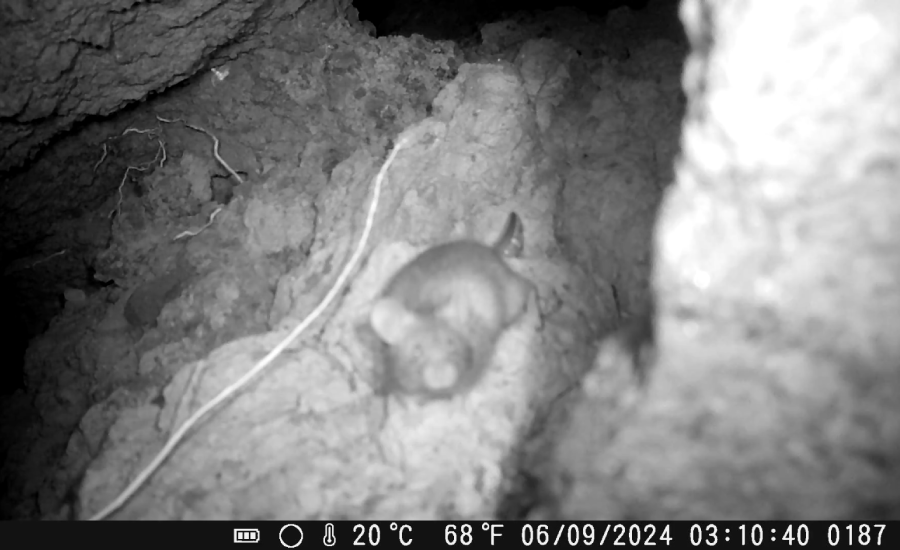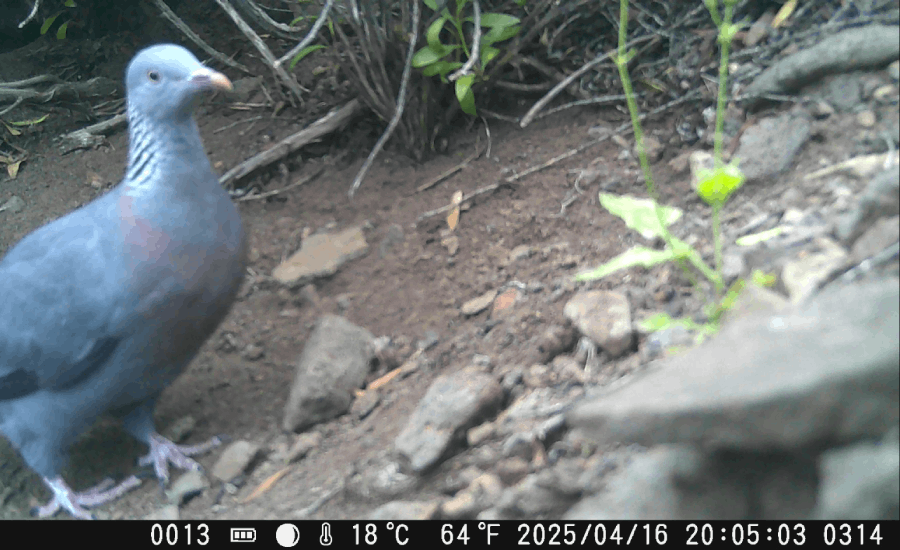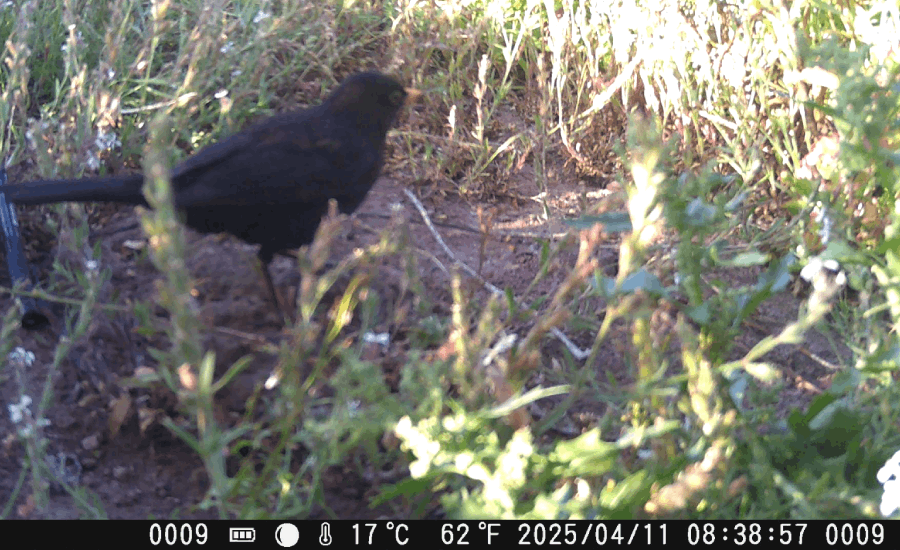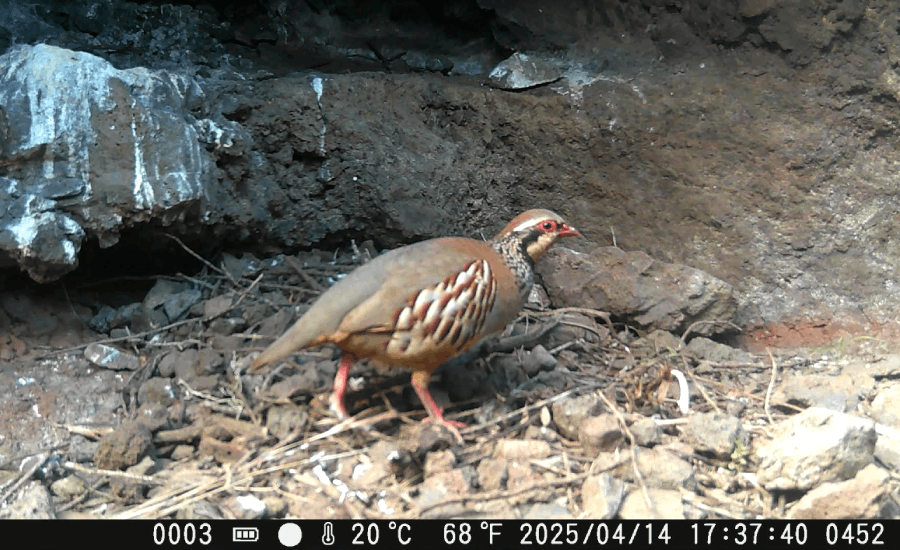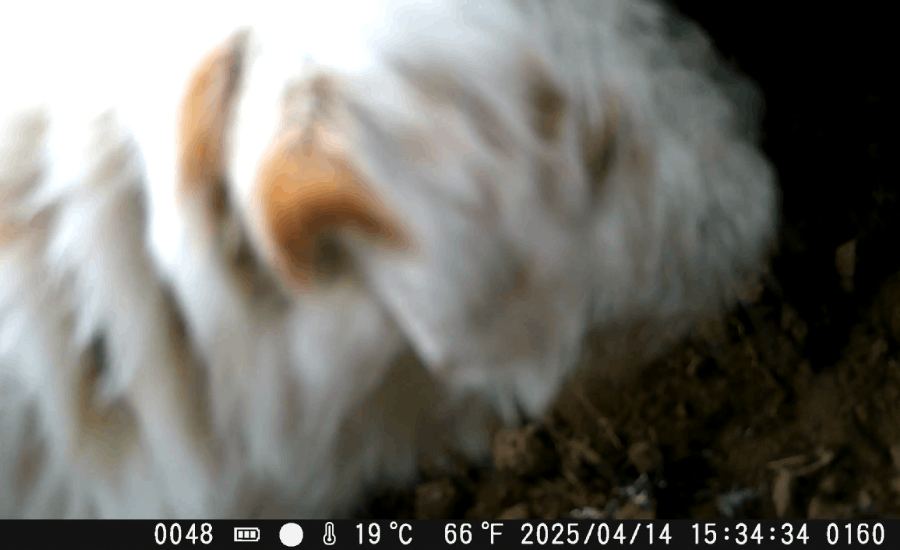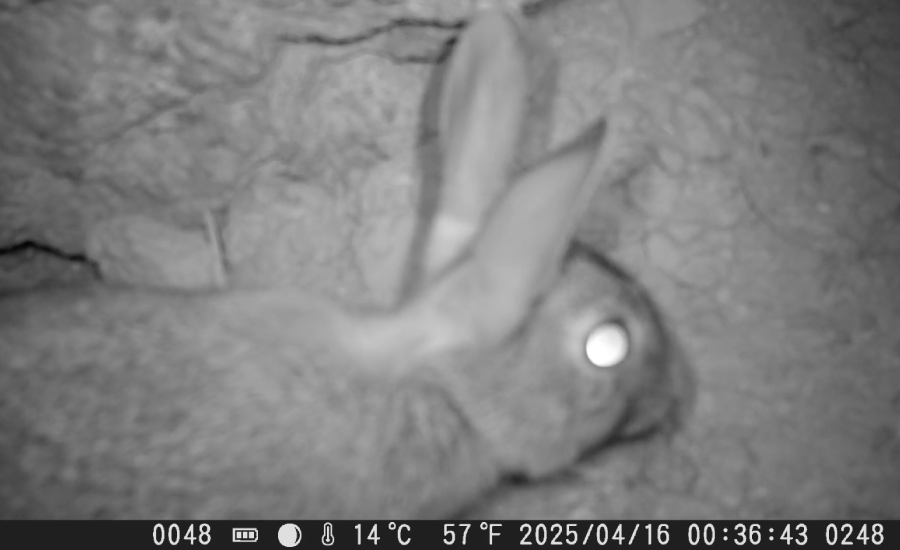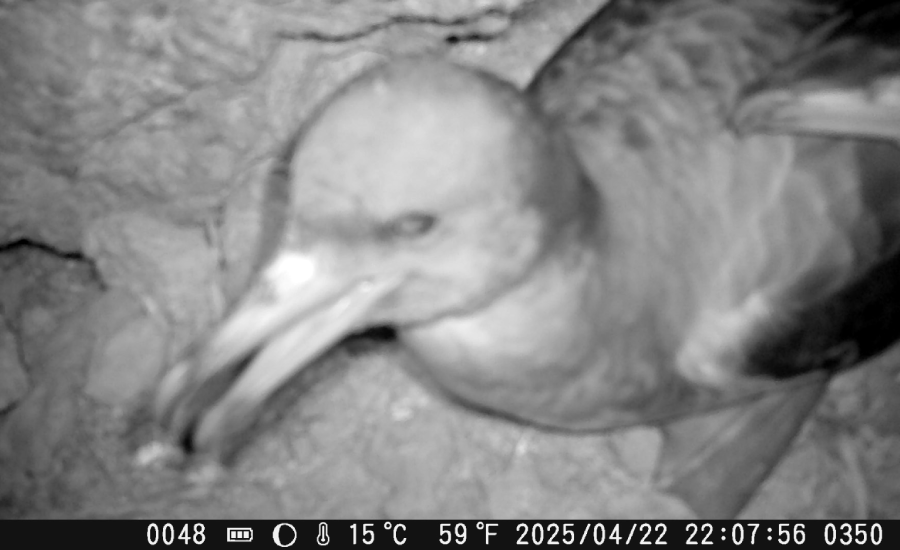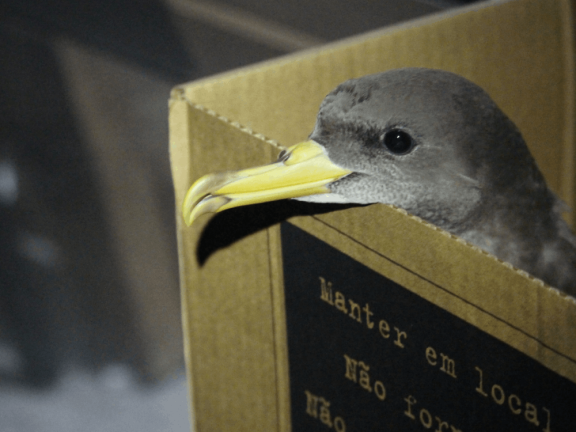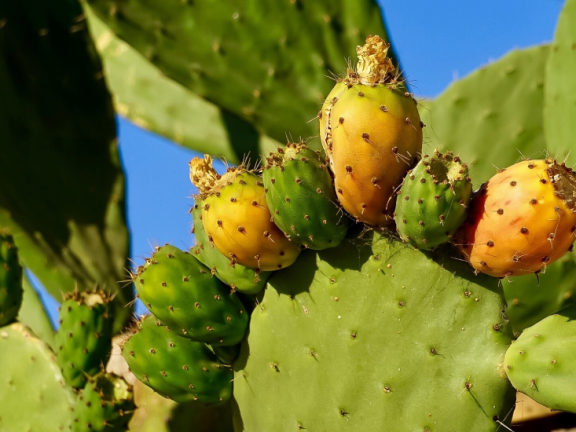As part of the STOP Predators project, camera traps are being installed in the nesting areas of the Cory’s shearwater, with the aim of monitoring the presence of introduced predators.
In addition to capturing images of unusual visitors, such as trocaz pigeon and madeiran chaffinchs, several species have been identified that pose a serious threat to seabirds and their nests, namely cats, dogs, rabbits, and rodents.
Cats, in particular, pose a significant threat to shearwaters. They prey on both juveniles and adults, contributing to the sharp decline in seabird populations. Their presence in island ecosystems, where these birds evolved in the absence of terrestrial predators, makes them extremely vulnerable. In addition to direct predation, cats can also transmit diseases and disturb nesting sites, negatively affecting the ecological balance of these areas.
Dogs, when roaming freely in nesting areas, also pose an increased risk. Even without engaging in direct predatory behavior, their presence can be enough to cause nests to be abandoned, compromising the birds’ reproductive success.
The presence of rabbits is equally concerning. Although they are not direct predators, they feed on native vegetation, causing habitat degradation and contributing to soil erosion, which reduces the availability of suitable nesting sites. This change in the ecosystem can also attract other predators, such as dogs and cats, increasing the risk of predation.
The cameras also recorded the presence of rodents, namely the black rat, the brown rat, and the murganho. Rats are responsible for the frequent predation of seabird eggs and chicks. The vole, in turn, is known for its easy adaptation to various environments and high reproductive potential. This combination allows it to reach pest proportions in short periods of time, which can lead to the reduction or extinction of indigenous species in the areas where it settles.
Analysis of the image sequences collected and presented above shows that, over a period of 10 days, the presence of a dog and a rabbit was documented in a nesting area, followed by the arrival of a pair of Cory’s shearwaters. This record suggests the occupation of nesting areas by invasive animals, indicating a possible disturbance of the natural habitat and raising concerns about the impact of these species on shearwater reproduction.
The ongoing monitoring within the scope of this project is therefore essential to understand the extent of the problem and implement effective seabird conservation strategies, contributing to the protection of biodiversity on the islands.
